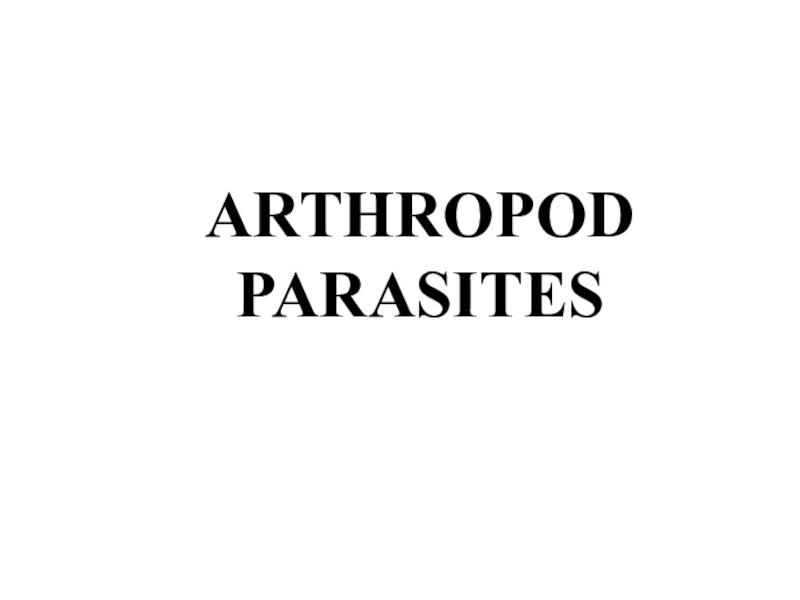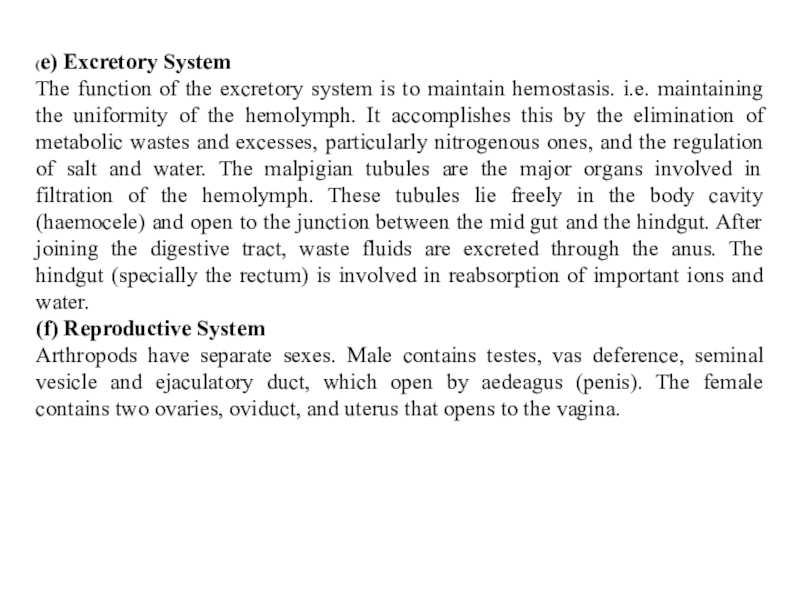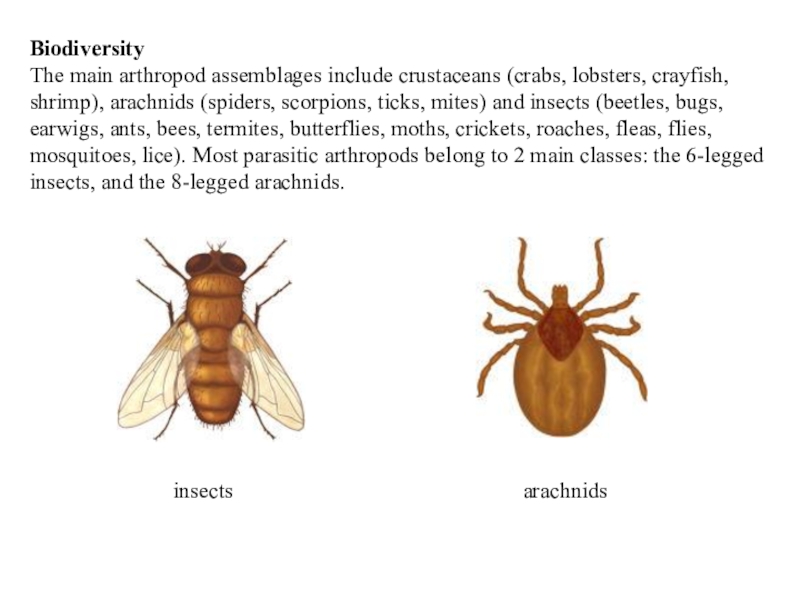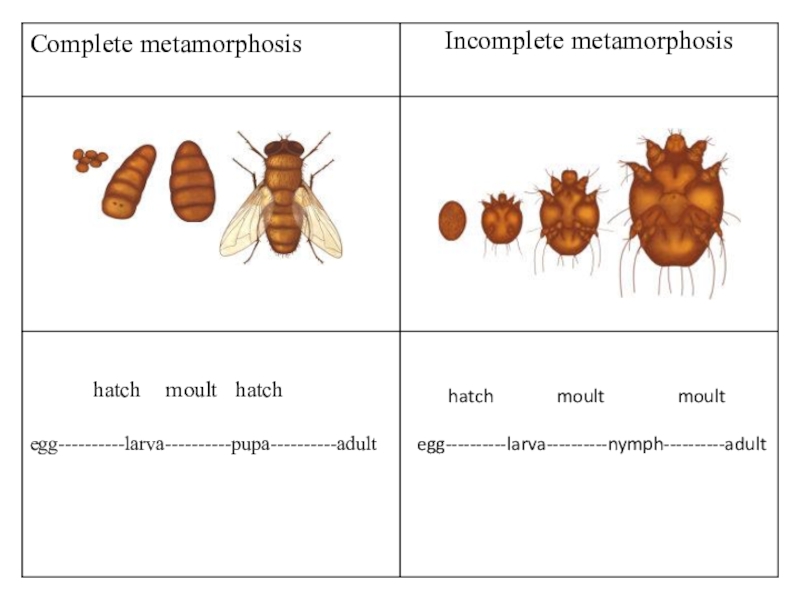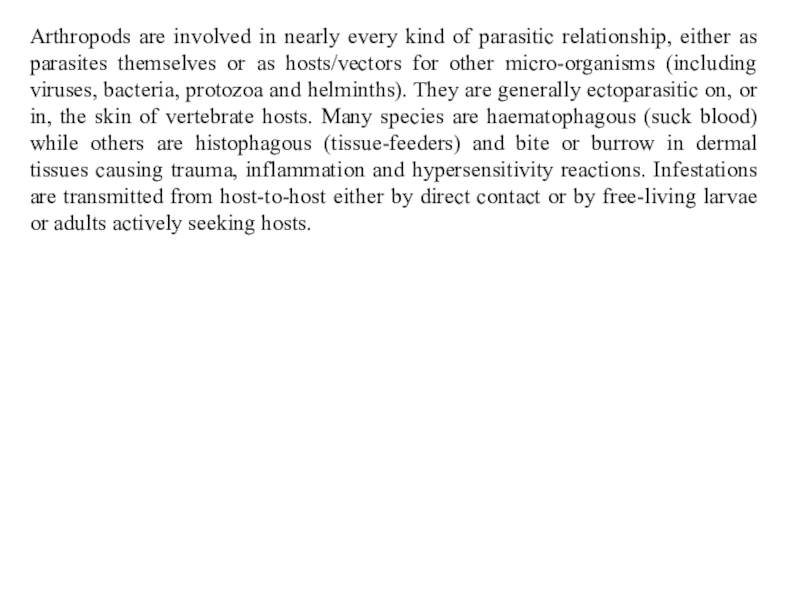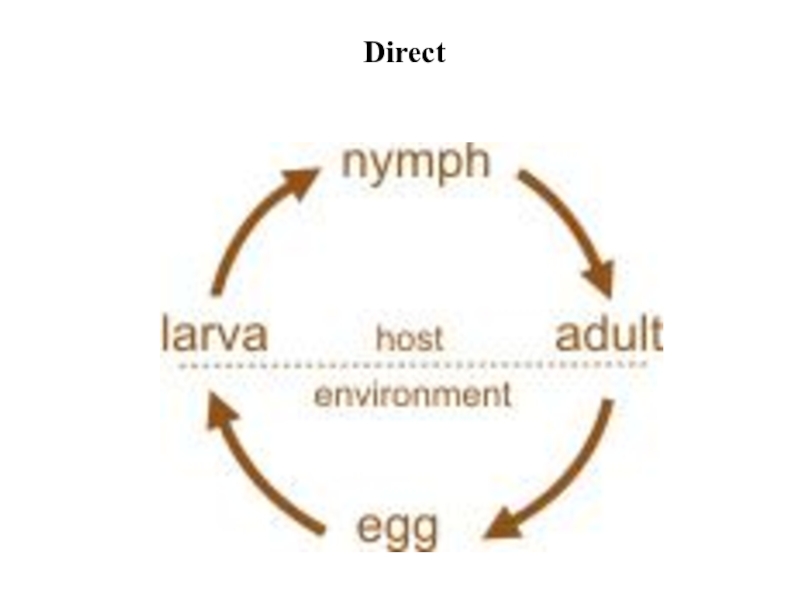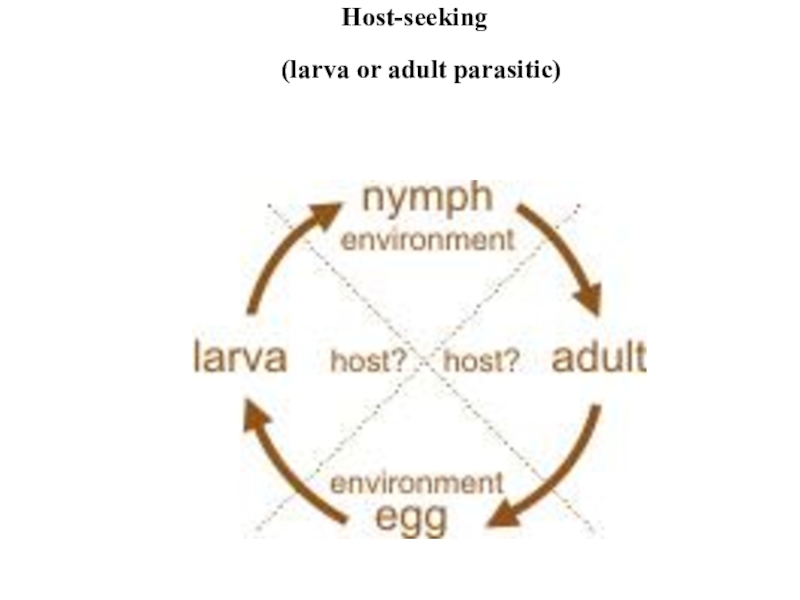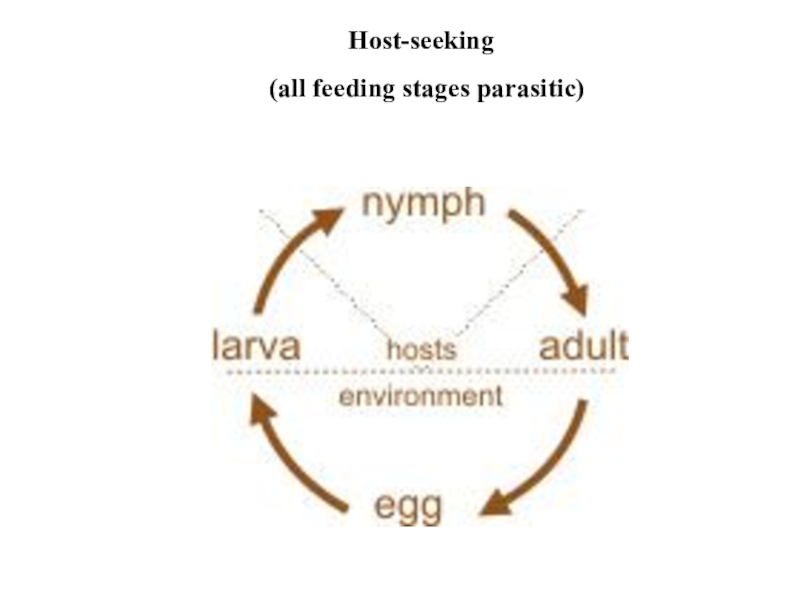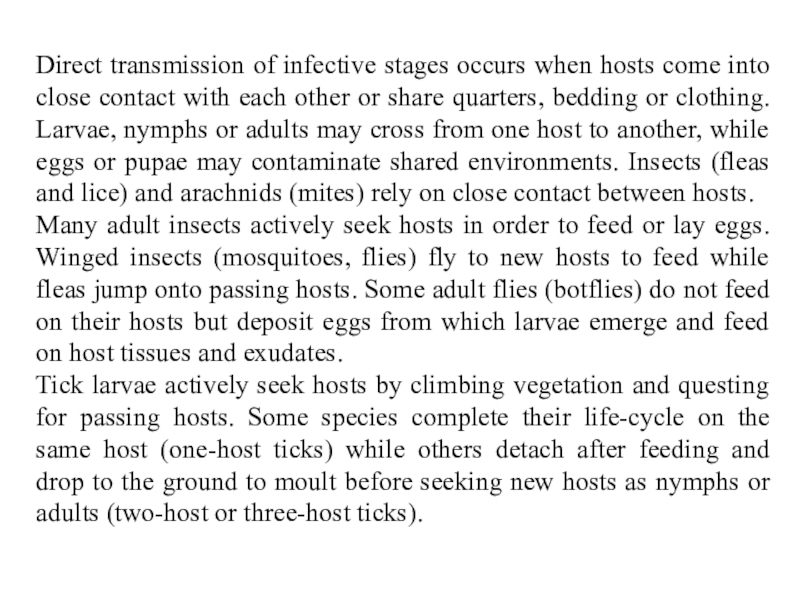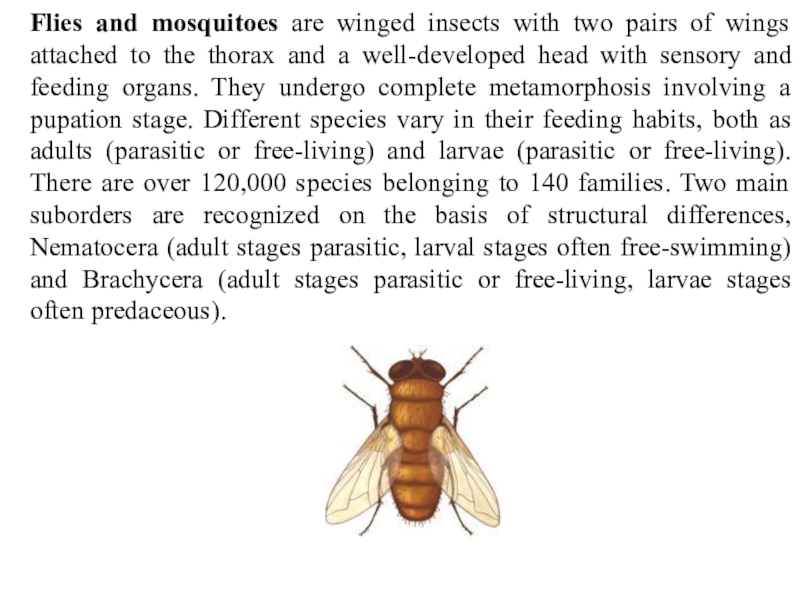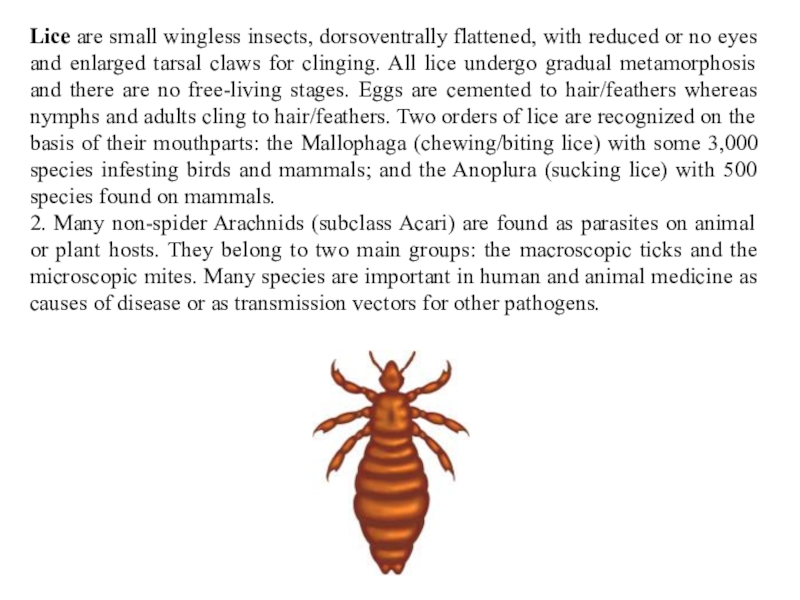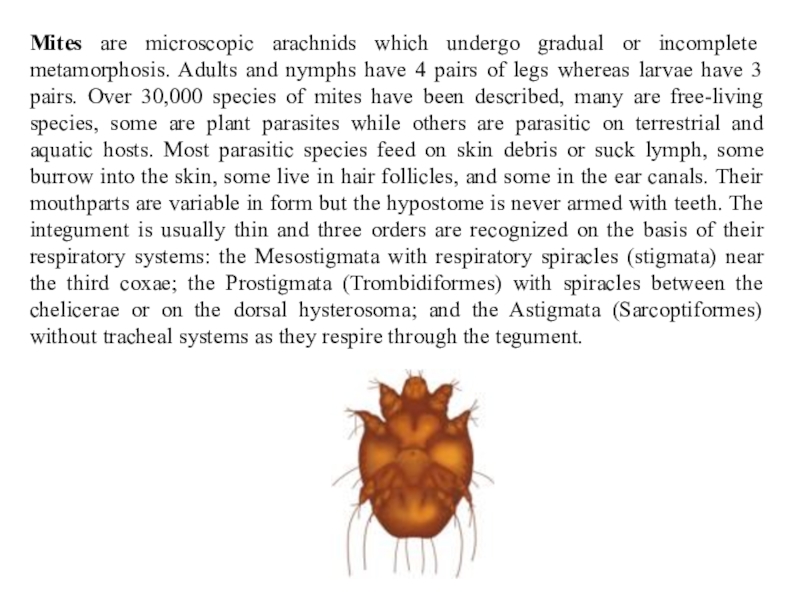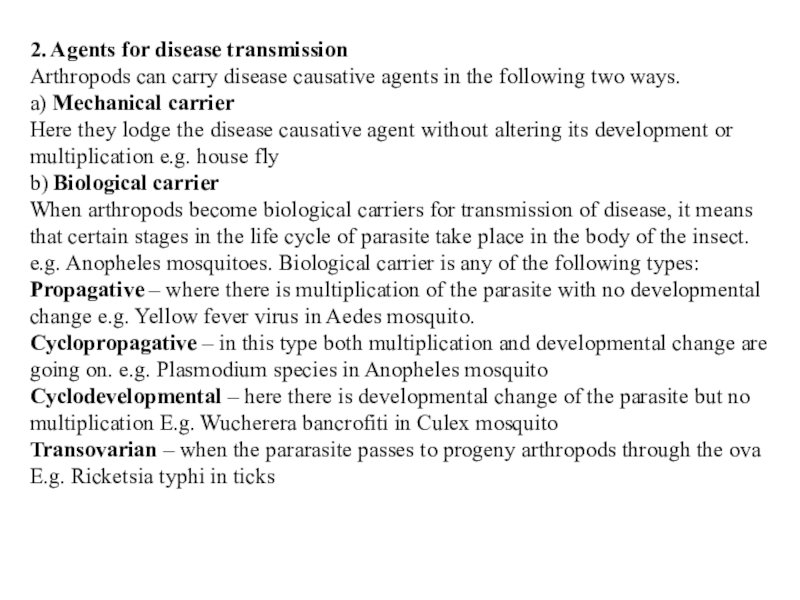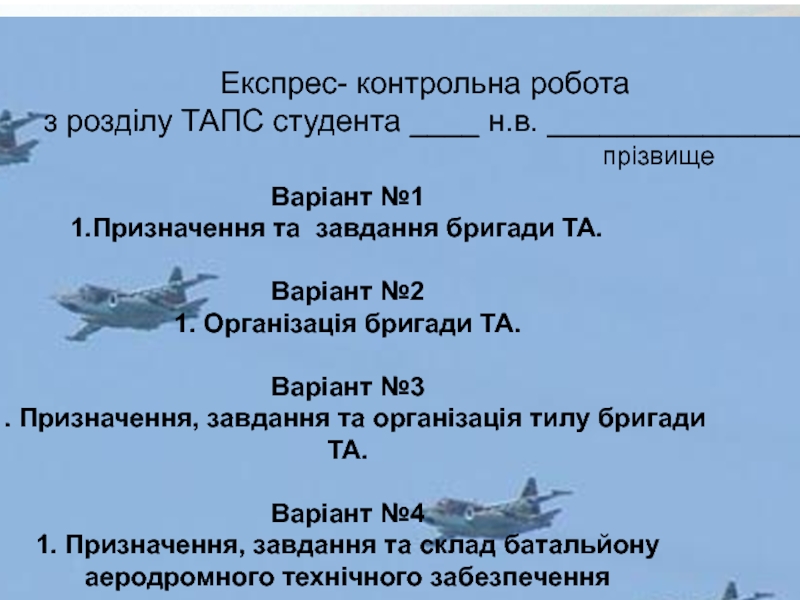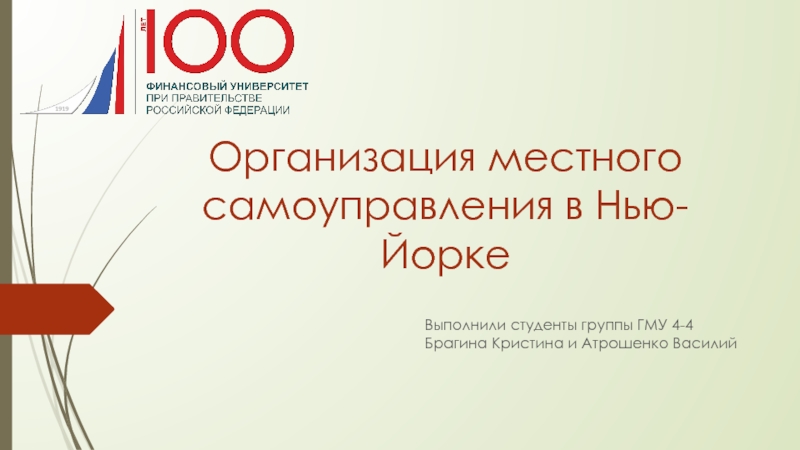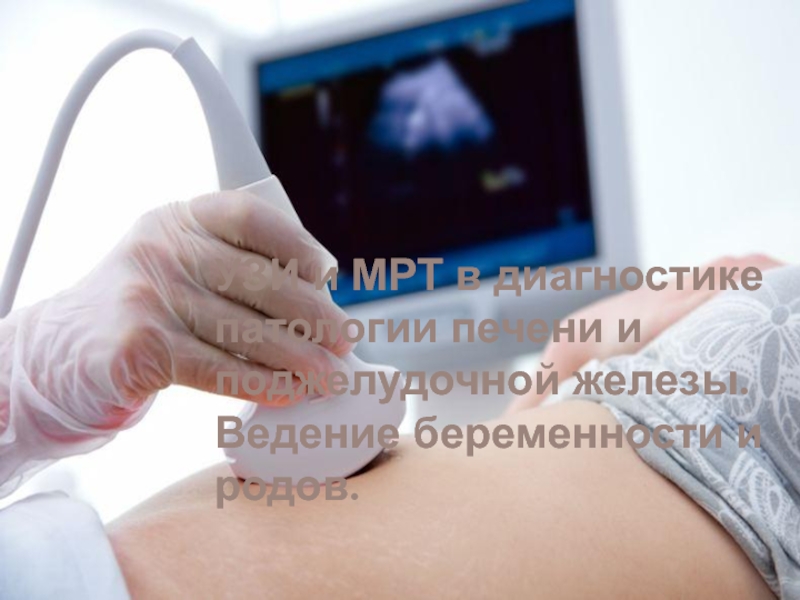Слайд 2Arthropods form a huge assemblage of small coelomate animals with
“jointed limbs” (hence the name arthro-pods).
General characteristic
The arthropods include
animals varying considerably in size and shape but have fundamental features in common. Generally all arthropods have the following characteristics in common:
• They are bilaterally symmetrical, have a body cavity called haemocele, which contains haemolymph (blood and lymph) that bathes internal organs.
• They exhibit segmentation of their bodies (metamerism) which is often masked in adults because their 10-25 body segments are combined into 2-3 functional groups (called tagmata). They have jointed appendages, which may take the form of legs, antennae, or mouthparts.
• They have a hard chitinous exoskeleton (cuticle), which helps for the protection and insertion of muscles. Arthropods possess a rigid cuticular exoskeleton consisting mainly of tanned proteins and chitin. The exoskeleton is usually hard, insoluble, virtually indigestible and impregnated with calcium salts or covered with wax. The exoskeleton provides physical and physiological protection and serves as a place for muscle attachment. Skeletal plates are joined by flexible articular membranes and the joints are hinges or pivots made from chondyles and sockets.
Arthropods use the following systems for survival and perpetuation.
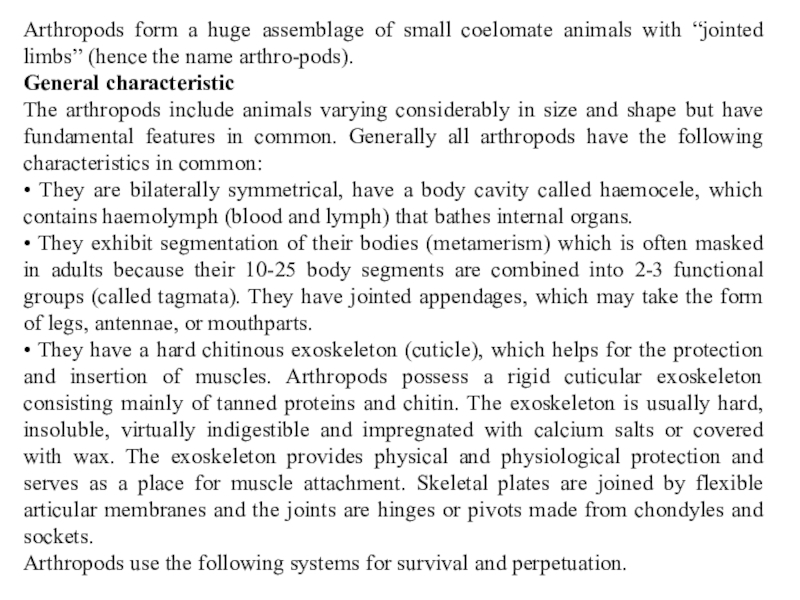
Слайд 3(a) Digestive system
The alimentary canal comprises three distinct regions: the
foregut or stomodium, the midgut or mesenteron, and the hindgut
or proctodaeum: Foregut - extends from the mouth to the proventriculus (muscular sac provided with stony cuticular plates or teeth serving for grinding and mixing of food); Mid gut - this is the stomach; physiologically the most active part of the alimentary canal, being concerned with digestive function; Hind gut -consists of the ileum, colon, and rectum and finally opens to the anus.
(b) Circulatory system
The circulatory system of all arthropods is of the “open” type, i.e. the fluid that circulates is not restricted to a network of conducting vessels as for example in vertebrates, but flows freely among the body organs. A consequence of the open system is that insects have only one extra cellular fluid, hemolymph, in contrast to vertebrates which have two such fluids, blood and lymph. Through this system hemolymph is pumped from the heart to the aorta then to the whole body. The circulatory system has no respiratory function.

Слайд 4(c) Respiratory system
In the vast majority of insects, respiration is
by means of internal air tubes known as trachea. These
ramify through the organs of the body and its appendages, the finest branches being termed tracheolea. The air generally enters the trachea through paired, usually lateral openings termed spiracles, which are segmentally arranged along the thorax and abdomen. Respiratory spiracles also serve as exit of air conducting branches from the tracheal tube. Respiratory spiracles serve as exit of air conducting braches from the tracheal tube.
(d) Nervous system
They exhibit varying degrees of cephalization whereby neural elements, sensory receptors and feeding structures are concentrated in the head region.The many diverse activities of the various systems of an insect are coordinated by the nervous system.
This system is composed of elongated cells, or neurons, which carry information in the form of electrical impulses from internal and external sensory cells to appropriate effectors. These consist of Nerve ganglia in the head, ventral part of the body, which later extends to body parts.

Слайд 5(e) Excretory System
The function of the excretory system is to
maintain hemostasis. i.e. maintaining the uniformity of the hemolymph. It
accomplishes this by the elimination of metabolic wastes and excesses, particularly nitrogenous ones, and the regulation of salt and water. The malpigian tubules are the major organs involved in filtration of the hemolymph. These tubules lie freely in the body cavity (haemocele) and open to the junction between the mid gut and the hindgut. After joining the digestive tract, waste fluids are excreted through the anus. The hindgut (specially the rectum) is involved in reabsorption of important ions and water.
(f) Reproductive System
Arthropods have separate sexes. Male contains testes, vas deference, seminal vesicle and ejaculatory duct, which open by aedeagus (penis). The female contains two ovaries, oviduct, and uterus that opens to the vagina.
Слайд 6Biodiversity
The main arthropod assemblages include crustaceans (crabs, lobsters, crayfish, shrimp),
arachnids (spiders, scorpions, ticks, mites) and insects (beetles, bugs, earwigs,
ants, bees, termites, butterflies, moths, crickets, roaches, fleas, flies, mosquitoes, lice). Most parasitic arthropods belong to 2 main classes: the 6-legged insects, and the 8-legged arachnids.
Слайд 7Insects have 3 distinct body parts, commonly called the head,
thorax and abdomen. The head has 2 antennae and the
thorax has 6 legs arranged in 3 bilateral pairs. Many insect species also have 2 pairs of wings attached to the thorax. Parasitic insect species include fleas, flies and lice which actively feed on host tissues and fluids at some stage in their life-cycles.
Arachnids have 2 body parts known as the prosoma (or cephalothorax) and opisthosoma (or abdomen). The cephalothorax has 8 legs arranged in 4 bilateral pairs and arachnids do not have wings or antennae. Important parasitic assemblages include the ticks and mites which bite into tissues and feed off host fluids.
Слайд 8Collectively, arthropods account for a substantial share of global biodiversity,
both in terms of species richness and relative abundance. There
are over 1,000,000 species of insects and over 50,000 species of arachnids. They are very successful and adaptable organisms and are capable of forming large populations due to their rapid and fertile reproduction rates. Many species are also able to withstand adverse environmental conditions by undergoing periods of developmental arrest (diapause). The protection afforded by their exoskeletons allows them to colonize many habitats and they overcome the problem of growing larger in a non-expandable exoskeleton by undergoing periodic moulting (or ecdysis) which is mediated by hormones. Developmental stages between moults are referred to as instars. Moulting is a complex process and its timing is mediated by many environmental and physiological cues. It involves detachment of the hypodermis from the procuticle, partial resorption of the old cuticle, production of a new epicuticle, dehiscence (splitting) of the old cuticle, emergence of the animal, stretching and expansion of the new cuticle by air and/or water intake, and then sclerotization of the new cuticle.
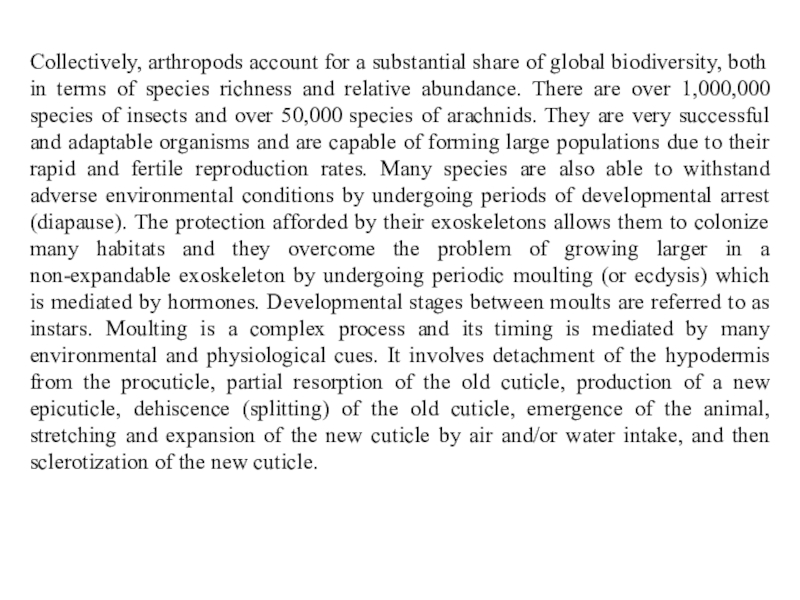
Слайд 9Life cycles
Adult arthropods are generally small in size, most are
visible but some remain microscopic. Arthropod sexes are separate and
fertilization is internal. A wide range of mating behaviours, insemination and egg production strategies are involved. In most species, the egg develops into a larva: i.e. a life-cycle stage that is structurally distinct from the adult and must undergo metamorphosis (structural reorganization) before becoming an adult. This metamorphosis may be complete (involving major changes during a pupation stage) or incomplete (involving gradual changes in nymph stages). For example, the grub-like larval stages of flies and fleas form cocoon-like pupae where they undergo complete metamorphosis and emerge as radically-different adult insects. In contrast, the larval instars (or nymphs) of lice, ticks and mites undergo incomplete metamorphosis through a series of moults gradually becoming more adult-like in appearance.
Слайд 11Arthropods are involved in nearly every kind of parasitic relationship,
either as parasites themselves or as hosts/vectors for other micro-organisms
(including viruses, bacteria, protozoa and helminths). They are generally ectoparasitic on, or in, the skin of vertebrate hosts. Many species are haematophagous (suck blood) while others are histophagous (tissue-feeders) and bite or burrow in dermal tissues causing trauma, inflammation and hypersensitivity reactions. Infestations are transmitted from host-to-host either by direct contact or by free-living larvae or adults actively seeking hosts.
Слайд 15Direct transmission of infective stages occurs when hosts come into
close contact with each other or share quarters, bedding or
clothing. Larvae, nymphs or adults may cross from one host to another, while eggs or pupae may contaminate shared environments. Insects (fleas and lice) and arachnids (mites) rely on close contact between hosts.
Many adult insects actively seek hosts in order to feed or lay eggs. Winged insects (mosquitoes, flies) fly to new hosts to feed while fleas jump onto passing hosts. Some adult flies (botflies) do not feed on their hosts but deposit eggs from which larvae emerge and feed on host tissues and exudates.
Tick larvae actively seek hosts by climbing vegetation and questing for passing hosts. Some species complete their life-cycle on the same host (one-host ticks) while others detach after feeding and drop to the ground to moult before seeking new hosts as nymphs or adults (two-host or three-host ticks).
Слайд 16Taxonomic overview
1. Insects exhibit extraordinary biodiversity, both in terms of
species richness (numbers of species) and relative abundance (population sizes).
Most parasitic species belong to three main groups: the jumping fleas (Siphonaptera); the winged flies (Diptera); and the wingless lice (Phthiraptera).
Fleas are bilaterally-flattened wingless insects with enlarged hindlimbs specially adapted for jumping (up to 100 times their body length). Jumping feats are accomplished using elastic resilin pads which expand explosively when uncocked from the compressed state. Fleas undergo complete metamorphosis whereby grub-like larvae form pupae from which adult fleas emerge. The larvae are not parasitic but feed on debris associated mainly with bedding, den or nest material, whereas the adult stages are parasitic and feed on host blood. There are some 2,500 flea species, most parasitic on mammals (especially rodents) and some on birds. They vary in the time spent on their hosts ranging from transient feeders (rodent fleas) to permanent attachment (sticktight fleas and burrowing chigoes).

Слайд 17Flies and mosquitoes are winged insects with two pairs of
wings attached to the thorax and a well-developed head with
sensory and feeding organs. They undergo complete metamorphosis involving a pupation stage. Different species vary in their feeding habits, both as adults (parasitic or free-living) and larvae (parasitic or free-living). There are over 120,000 species belonging to 140 families. Two main suborders are recognized on the basis of structural differences, Nematocera (adult stages parasitic, larval stages often free-swimming) and Brachycera (adult stages parasitic or free-living, larvae stages often predaceous).
Слайд 18Lice are small wingless insects, dorsoventrally flattened, with reduced or
no eyes and enlarged tarsal claws for clinging. All lice
undergo gradual metamorphosis and there are no free-living stages. Eggs are cemented to hair/feathers whereas nymphs and adults cling to hair/feathers. Two orders of lice are recognized on the basis of their mouthparts: the Mallophaga (chewing/biting lice) with some 3,000 species infesting birds and mammals; and the Anoplura (sucking lice) with 500 species found on mammals.
2. Many non-spider Arachnids (subclass Acari) are found as parasites on animal or plant hosts. They belong to two main groups: the macroscopic ticks and the microscopic mites. Many species are important in human and animal medicine as causes of disease or as transmission vectors for other pathogens.
Слайд 19Ticks are epidermal parasites of terrestrial vertebrates that may cause
anaemia, dermatosis, paralysis, otoacariasis and other infections (transmit viral, bacterial,
rickettsial, spirochaete, protozoal and helminth pathogens). They feed mainly on blood and their mouthparts are armed with small backward-facing teeth to aid in attachment. All ticks undergo gradual/incomplete metamorphosis whereby larval and nymphal instars resemble adults. The integument is relatively thick and respiration occurs via spiracles (usually only one pair) and trachea. Two major families of ticks are recognized on the basis of many morphological features: the Ixodidae (hard ticks with a tough cuticle and a large anterodorsal scutum) with some 650 species that infest mammals, birds and reptiles; and the Argasidae (soft ticks with a leathery integument and no scutum) with 160 species that infest mainly birds and some mammals.
Слайд 20Mites are microscopic arachnids which undergo gradual or incomplete metamorphosis.
Adults and nymphs have 4 pairs of legs whereas larvae
have 3 pairs. Over 30,000 species of mites have been described, many are free-living species, some are plant parasites while others are parasitic on terrestrial and aquatic hosts. Most parasitic species feed on skin debris or suck lymph, some burrow into the skin, some live in hair follicles, and some in the ear canals. Their mouthparts are variable in form but the hypostome is never armed with teeth. The integument is usually thin and three orders are recognized on the basis of their respiratory systems: the Mesostigmata with respiratory spiracles (stigmata) near the third coxae; the Prostigmata (Trombidiformes) with spiracles between the chelicerae or on the dorsal hysterosoma; and the Astigmata (Sarcoptiformes) without tracheal systems as they respire through the tegument.
Слайд 21Importance of Arthropods in parasitology
Arthropods affect the health of man
by being:
1. Direct agents for disease /discomfort.
The following effects may
be seen by the direct effect of arthropods.
• Annoyance – comes from disruptive activities of insects, such as flying around or landing on the head, and from feeding, possibly causing blood loss, though they don’t remove sufficient blood to cause a medical problem in humans.
• Entomophobia – is an irrational fear of insects. One extreme form of entomophobia is delusory parasitosis, in which individuals become convinced that they are infested with insects when no actual infestation exists. This may cause undue alarm and anxiety, leading to unwarranted use of insecticides, and in severe cases, requiring professional treatment.
• Envenomization – is the introduction of a poison into the body of humans and animals. Arthropods may also inoculate poison to the host. E.g. Scorpion
• Allergic reactions – a hypersensitive response to insect proteins. All of the mechanisms associated with envenomization can also cause exposure to allergens. In fact, human deaths from bee and wasp stings usually are associated with a hypersensitive reaction rather than direct effect of a toxin.
• Dermatosis and dermatitis – dermatosis is a disease of the skin and dermatitis is an inflammation of the skin. Both dermatosis and dermatitis can be caused by arthropod activities. Many mite species, such as scabies mites produce acute skin irritations.

Слайд 222. Agents for disease transmission
Arthropods can carry disease causative agents
in the following two ways.
a) Mechanical carrier
Here they lodge the
disease causative agent without altering its development or multiplication e.g. house fly
b) Biological carrier
When arthropods become biological carriers for transmission of disease, it means that certain stages in the life cycle of parasite take place in the body of the insect. e.g. Anopheles mosquitoes. Biological carrier is any of the following types:
Propagative – where there is multiplication of the parasite with no developmental change e.g. Yellow fever virus in Aedes mosquito.
Cyclopropagative – in this type both multiplication and developmental change are going on. e.g. Plasmodium species in Anopheles mosquito
Cyclodevelopmental – here there is developmental change of the parasite but no multiplication E.g. Wucherera bancrofiti in Culex mosquito
Transovarian – when the pararasite passes to progeny arthropods through the ova E.g. Ricketsia typhi in ticks
